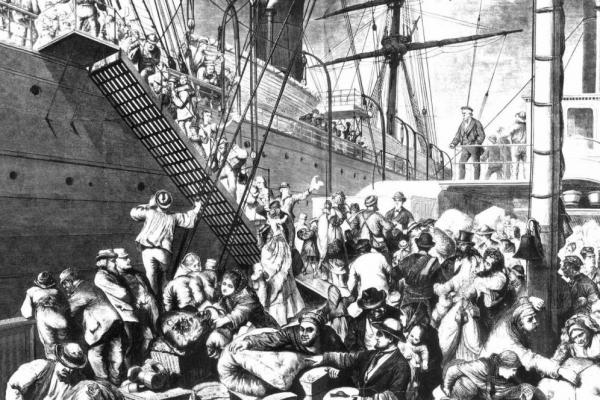
Nov. 21 (UPI) — Many Germans migrated to the United States during the 19th century. Until now, researchers believed war, poverty and social upheaval explained the exodus. But new research suggests climate change also played a significant role.
“Overall, we found that climate indirectly explains up to 20 to 30 percent of migration from Southwest Germany to North America in the 19th century,” Rüdiger Glaser, a professor at the University of Freiburg in Germany, said in a news release.
The 19th century hosted what’s known as the Little Ice Age. During the 1800s, glaciers in the Alps advanced, summers proved cooler than usual and many winters were long and harsh. In addition, the century hosted several prolonged droughts and damaging floods.
The new analysis — published this week in the journal Climate of the Past — suggests climate change was most pronounced in southwest Germany.
“The chain of effects is clearly visible: poor climate conditions lead to low crop yields, rising cereal prices and finally emigration,” said Glaser. “But it is only one piece of the puzzle.”
Researchers found different migration waves during the 19th century could be explained by different factors. One of the earliest Germany-to-America migration waves occurred after the eruption of Indonesia’s Tambora volcano in 1815. The ash cloud blocked out the sun and caused temperatures around the world to dip for a few years. Crop failure, famine and exodus followed.
“Another peak-migration year, 1846, had an extremely hot and dry summer leading to bad harvests and high food prices,” said Annette Bösmeier, a researcher at the University of Freiburg. “These two years of high migration numbers appear to be quite strongly influenced by climate changes, while for other migration waves other circumstances appeared to be more important.”
The largest wave of migration occurred between 1850 and 1855. Climate change affected crop yields during this period, but other factors, like war and revolution, were more influential in triggering rising food prices and spurring migration.
“Migration in the 19th century was a complex process influenced by multiple factors. Lack of economic perspectives, social pressure, population development, religious and political disputes, warfare, family ties and the promotion of emigration from different sides influenced people’s decision to leave their home country,” said Glaser. “Nevertheless, we see clearly that climate was a major factor.”






